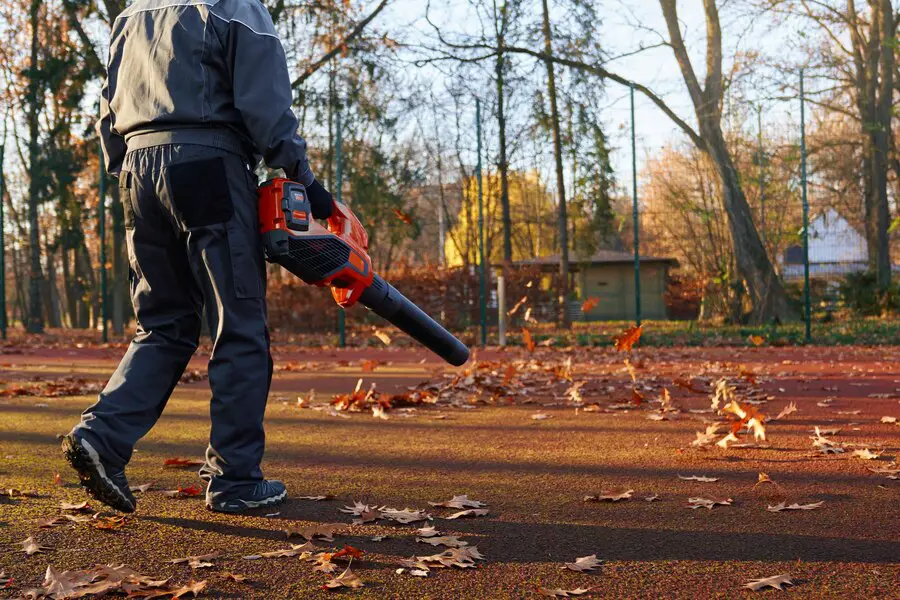
Overseeding your lawn in the fall is one of the best ways to ensure a lush, healthy yard come spring. The cooler temperatures and adequate moisture provide ideal conditions for grass seed germination. This guide outlines the most effective strategies for overseeding your lawn during the fall season.
Why Fall is the Best Time for Overseeding
The fall season offers optimal conditions for overseeding. The cooler temperatures prevent grass seed from drying out too quickly, while the increased rainfall provides natural irrigation. Moreover, the warm soil temperatures encourage seed germination. This makes fall the perfect window to rejuvenate your lawn.
Preparing Your Lawn for Overseeding
Proper preparation is key to successful overseeding. Start by mowing your lawn to a shorter height, typically around 1.5 to 2 inches. This helps expose the soil and gives the grass seed a better chance to make contact with the soil. After mowing, remove any grass clippings and debris to prevent them from blocking seed growth.
Aerate the Soil for Better Seed Penetration
Aerating the soil before overseeding is a critical step. It creates small holes in the ground, allowing seed to penetrate the soil and establish strong roots. Use a lawn aerator or rent one from a local garden center. Aerating helps improve water, air, and nutrient absorption, promoting a healthy, thick lawn.
Choosing the Right Grass Seed
Selecting the appropriate grass seed is essential for a successful lawn. Consider factors like your region’s climate, your lawn’s sun exposure, and your maintenance preferences. For cooler climates, fescue and ryegrass are excellent options, while warmer regions may benefit from Bermuda or zoysia grass. Always choose high-quality seed to ensure better germination rates.
Evenly Distribute Grass Seed
When overseeding, evenly distribute the grass seed over your lawn. You can use a broadcast spreader to ensure an even application. Apply the seed in two passes: one in a north-south direction, and the other in an east-west direction. This cross-pattern helps distribute the seed uniformly, promoting even growth.
Watering Your Lawn After Overseeding
Watering is crucial for the success of your overseeding project. After sowing the grass seed, water your lawn lightly but frequently to keep the soil consistently moist. Watering two to three times a day for the first few weeks is ideal, especially during dry spells. Once the grass starts to grow, reduce the watering frequency to encourage deep root development.
Fertilize to Promote Healthy Growth
Fertilizing your lawn after overseeding helps ensure strong grass growth. Use a balanced, slow-release fertilizer to provide essential nutrients. Apply fertilizer shortly after overseeding, following the manufacturer’s instructions. The right nutrients will support root development and enhance seedling growth, ensuring a thicker, healthier lawn.
Avoid Heavy Foot Traffic
After overseeding, it’s important to avoid heavy foot traffic on your lawn. Walking on the lawn can disturb the seed and hinder germination. If possible, keep pets and children off the grass until the new grass has established itself. This will give your lawn the best chance for growth and will prevent damage to the delicate new seedlings.
Maintaining Your Lawn After Overseeding
Once the new grass begins to grow, maintain it with regular mowing. Keep the mower blade high, around 3 inches, to avoid cutting the young grass too short. Continue watering as needed, and fertilize your lawn every few weeks to encourage ongoing growth. By sticking to this maintenance routine, your lawn will remain healthy and vibrant throughout the fall and winter months.
Final Thoughts
Overseeding your lawn in the fall is an investment in a greener, more robust lawn for the following spring. With proper preparation, soil aeration, and consistent maintenance, you can achieve a lush lawn that thrives year-round. By following these best practices, you’ll enjoy a beautiful, healthy lawn that enhances the beauty of your home.



